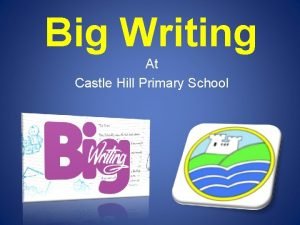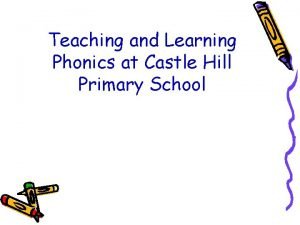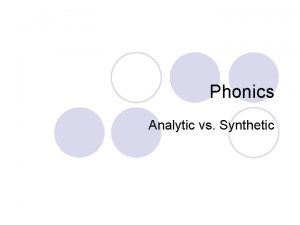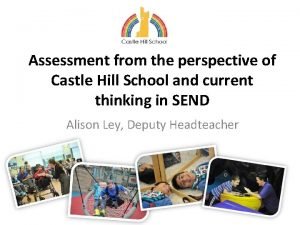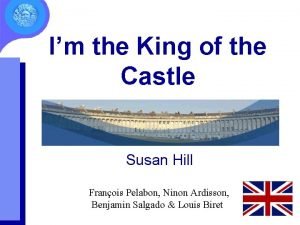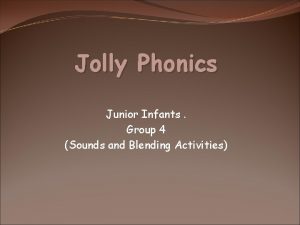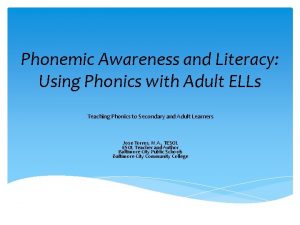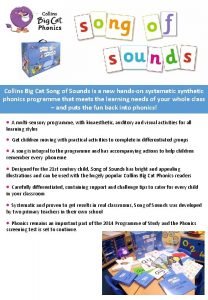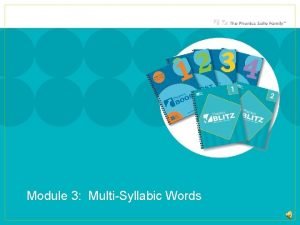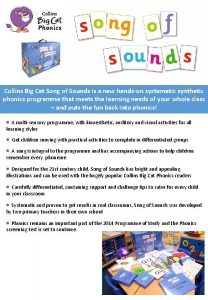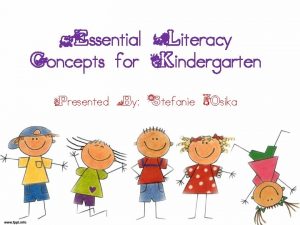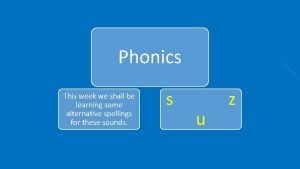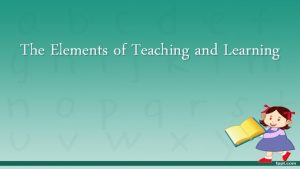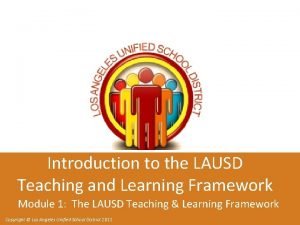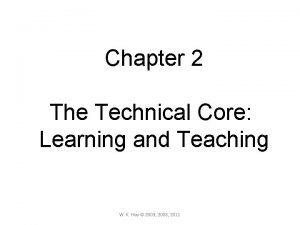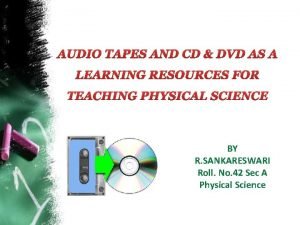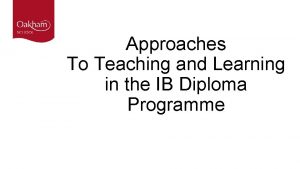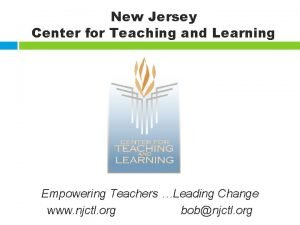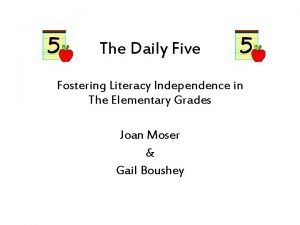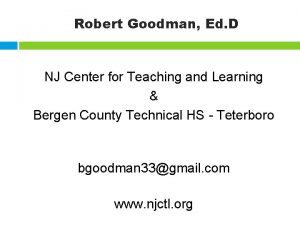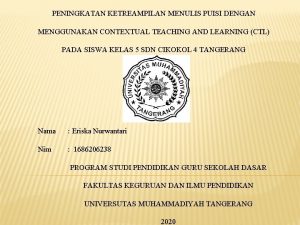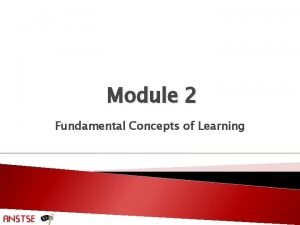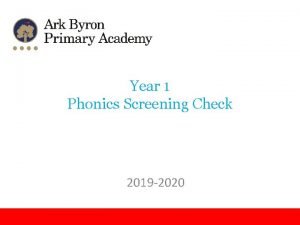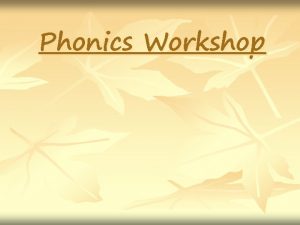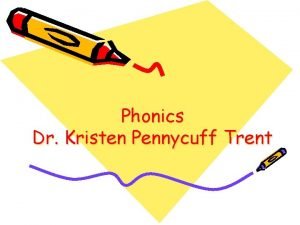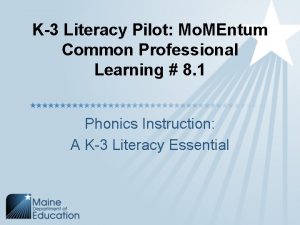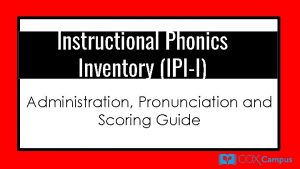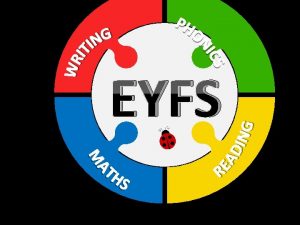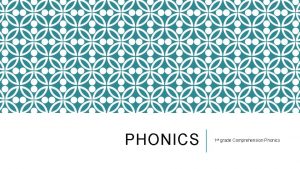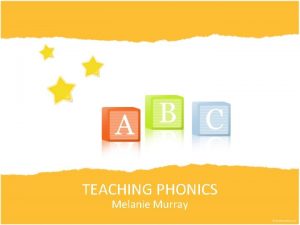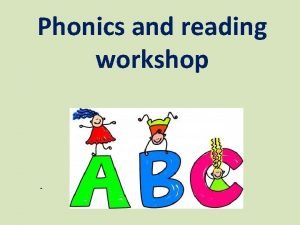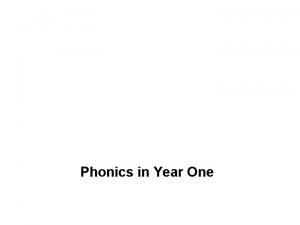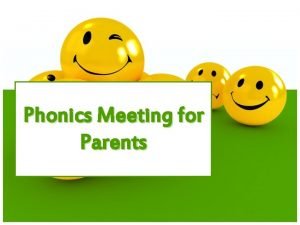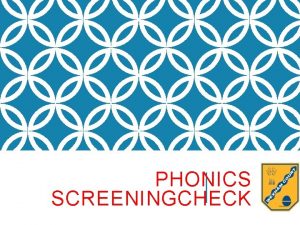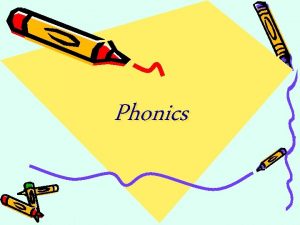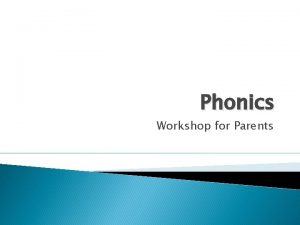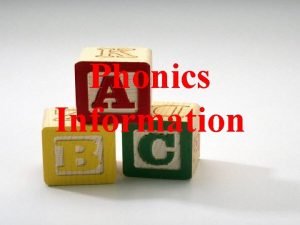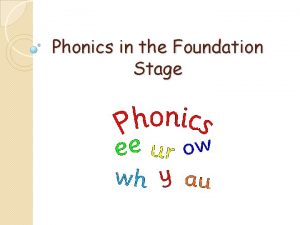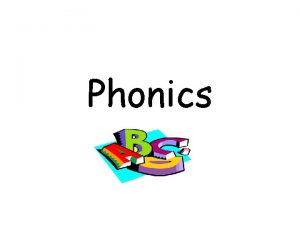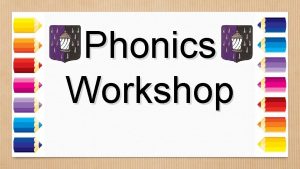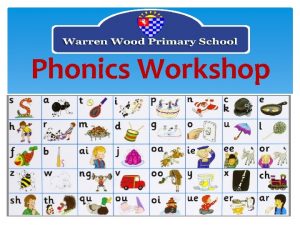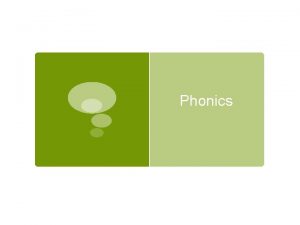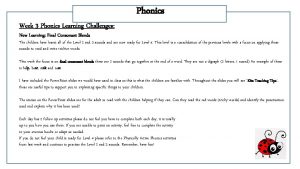Teaching and Learning Phonics at Castle Hill Primary






































- Slides: 38

Teaching and Learning Phonics at Castle Hill Primary School

Aims • To share how phonics is taught. • To develop parents’ confidence in helping their children with phonics and reading • To teach the basics of phonics and some useful phonics terms • To outline the different stages in phonic development • To show examples of activities and resources we use to teach phonics • To give parents an opportunity to ask questions

What is phonics and how can I help my child at home?

Phonics is all about using … skills for reading and spelling + knowledge of the alphabet Learning phonics will help your child to become a good reader and writer.

Every child in Foundation Stage and KS 1 learns daily phonics at their level. We deliver this through small, differentiated groups. Phonics gradually progresses to learning spellings – rules etc.

Daily Phonics • Every day the children have 20 minute sessions of phonics. • Fast paced approach • Lessons encompass a range of games, songs and rhymes • We follow the Letters and Sounds planning document. • There are 6 phonics phases which the children work through at their own pace

Phase One Phonic Knowledge and Skills Activities are divided into seven aspects, including (Nursery/Reception) environmental sounds, instrumental sounds, body sounds, rhythm and rhyme, alliteration, voice sounds and finally oral blending and segmenting. Phase Two Learning 19 letters of the alphabet and one sound for (Reception) each. Blending sounds together to make words. up to 6 weeks Segmenting words into their separate sounds. Beginning to read simple captions. Phase Three The remaining 7 letters of the alphabet, one sound for (Reception) each. Graphemes such as ch, oo, th representing the up to 12 weeks remaining phonemes not covered by single letters. Reading captions, sentences and questions. On completion of this phase, children will have learnt the "simple code", i. e. one grapheme for each phoneme in the English language. Phase Four No new grapheme-phoneme correspondences are (Reception) taught in this phase. Children learn to blend and 4 to 6 weeks segment longer words with adjacent consonants, e. g. swim, clap, jump.

Phase Five (Throughout Year 1) Phase Six (Throughout Year 2 and beyond) Now we move on to the "complex code". Children learn more graphemes for the phonemes which they already know, plus different ways of pronouncing the graphemes they already know. Working on spelling, including prefixes and suffixes, doubling and dropping letters etc.

Phonic terms your child will learn at school • Phonemes: The smallest units of sound that are found within a word • Grapheme: The spelling of the sound e. g. Th • Diagraph: Two letters that make one sound when read • Trigraphs: Three letters that make one sound • CVC: Stands for consonant, vowel, consonant. • Segmenting is breaking up a word into its sounds. • Blending : Putting the sounds together to read a word • Tricky words: Words that cannot easily be decoded.

Phase 1: Getting ready for phonics - Nursery 1. Tuning into sounds 2. Listening and remembering sounds 3. Talking about sounds Music and movement Rhythm and rhyme Sound effects Speaking and listening skills

Phase 2: Learning phonemes to read and write simple words – Reception • Children will learn their first 19 phonemes: Set 1: s a t p Set 2: i n m d Set 3: g o c k Set 4: ck (as in duck) e u r Set 5: h b l f ff (as in puff) ll (as in hill) ss (as in hiss) • They will use these phonemes to read and spell simple “consonant-vowel-consonant” (CVC) words: sat, tap, dig, duck, rug, puff, hill, hiss All these words contain 3 phonemes.

Saying the sounds • Sounds should be articulated clearly and precisely. https: //www. youtube. com/watch? v= Ll. Tw 0 oi. LNys

Phonics Words Your children will learn to use the term: Blending • Children need to be able to hear the separate sounds in a word and then blend them together to say the whole word.

Blending /b/ /e/ /d/ = bed /t/ /i/ /n/ = tin /m/ /u/ /g/ = mug

Phonics Words Your children will learn to use the term: Segmenting • Children need to be able to word and hear a whole say every sound that they hear.

Segmenting bed = /b/ /e/ /d/ tin= /t/ /i/ /n/ mug= /m/ /u/ /g/

How can I help at home? Oral blending The robot game: Children need to practise hearing a series of spoken sounds and merging them together to make a word. For example, you say “put your h-a-n-d-s on your kn-ee-s”, and your child does it. Video What’s in the box? : is a great game for practising this skill. (Demo)

Phonics Words Your children will learn to use the term: phoneme Phonemes are sounds that can be heard in words e. g. c-a-t

Phonics Words Your children will learn to use the term: grapheme This is how a phoneme is written down

Phonics Words Your children will learn to use the term: digraph This means that the phoneme comprises of two letters e. g. ll, ff, ck, ss

Phonics words Phoneme frame and sound buttons c . f . a t . . i sh . _

Sound buttons activity log duck fill

Phoneme frames activity Write the sounds in the phoneme frames for these words.

Tricky Words There are many words that cannot be blended or segmented because they are irregular. the was said you some

Phase 3: Learning the long vowel phonemes • Children will enter phase 3 once they know the first 19 phonemes and can blend and segment to read and spell CVC* words. • They will learn another 26 phonemes: • j, v, w, x, y, z, zz, qu • ch, sh, th, ng, ai, ee, igh, oa, oo, ar, or, ur, ow, oi, ear, air, ure, er • They will use these phonemes (and the ones from Phase 2) to read and spell words: chip, shop, thin, ring, pain, feet, night, boat, boot, look, farm, fork, burn, town, coin, dear, fair, sure

What does CVC mean? consonant-vowel-consonant e. g. cat mum pig What about these? coat ship cheek quack

Phonics Words Your children will learn to use the term: Trigraph This means that the phoneme comprises of three letters e. g. igh , ear, ure

Phase 4: Introducing consonant clusters: reading and spelling words with four or more phonemes • Children move into phase 4 when they know all the phonemes from phases 2 and 3 and can use them to read and spell simple words (blending to read and segmenting to spell). • Phase 4 doesn’t introduce any new phonemes. • It focuses on reading and spelling longer words with the phonemes they already know. • These words have consonant clusters at the beginning: spot, trip, clap, green, clown …or at the end: tent, mend, damp, burnt …or at the beginning and end! trust, spend, twist

Phase 5 – Throughout Year 1 • Teach new graphemes for reading • ay, ou, ie, ea, oy, ir, ue, aw, wh, ph, ew, oe, au, a-e, e-e, i-e, o-e, u-e Learn alternative pronunciations of graphemes (the same grapheme can represent more than one phoneme): Fin/find, hot/cold, cat/cent, got/giant, but/put, cow/blow, tie/field, eat/bread, farmer/her, hat/what, yes/by/very, chin/school/chef, out/shoulder/could/you. • .

Learning all the variations! Learning that the same phoneme can be represented in more than one way: burn first term heard work

Learning all the variations! Learning that the same grapheme can represent more than one phoneme: meat bread he bed bear hear cow low

Teaching the split digraph tie time tone cube pine

Phase 6 • Phase 6 focuses on spellings and learning rules for spelling alternatives. Children look at syllables, base words, analogy and mnemonics. • Children might learn about past tense, rules for adding ‘ing’ and irregular verbs • ‘tion’ and ‘sion’ words • . . PhonicsT-L-234 -Memory-Strategies-For-Spelling-Display. Posters. pdf

Is there anything I can do at home? y e s

How can I help at home? • When spelling, encourage your child to think about what “looks right”. • Have fun trying out different options…wipe clean whiteboards are good for trying out spellings. • • • tray rain boil boy throat snow trai rayn boyl boi throwt snoa

At home • Sound books for some children. • Practise the phonemes together. • Use them to make different words at home and play phonics games • Read everyday with your child if possible • Read anything and anything. This doesn’t have to be your child’s home reading book.

Don’t forget… Learning to read should be fun for both children and parents.

Aims • To share how phonics is taught. • To develop parents’ confidence in helping their children with phonics and reading • To teach the basics of phonics and some useful phonics terms • To outline the different stages in phonic development • To show examples of activities and resources we use to teach phonics • To give parents an opportunity to ask questions
 High school writing castle hill
High school writing castle hill Primary writing castle hill
Primary writing castle hill Learn composition of various synthetic bases
Learn composition of various synthetic bases Castle hill school huddersfield
Castle hill school huddersfield Susan hill i'm the king of the castle
Susan hill i'm the king of the castle Jjjj song
Jjjj song Teaching phonics to adults
Teaching phonics to adults Micro teaching definition
Micro teaching definition Cuadro comparativo e-learning b-learning m-learning
Cuadro comparativo e-learning b-learning m-learning Cat song
Cat song Phonics blitz scope and sequence
Phonics blitz scope and sequence Big cat song
Big cat song Fountas and pinnell phonics kindergarten
Fountas and pinnell phonics kindergarten Phonics play obb and bob
Phonics play obb and bob What are the elements of teaching and learning?
What are the elements of teaching and learning? New jersey center for teaching and learning
New jersey center for teaching and learning New jersey center for teaching and learning
New jersey center for teaching and learning Guiding principles of mtb-mle
Guiding principles of mtb-mle Teaching learning framework lausd
Teaching learning framework lausd Assessment the bridge between teaching and learning
Assessment the bridge between teaching and learning Technical core teaching and learning
Technical core teaching and learning Educational cds for adults
Educational cds for adults Approaches to learning ib dp
Approaches to learning ib dp New jersey center for teaching and learning
New jersey center for teaching and learning 10 steps to teaching and learning independence
10 steps to teaching and learning independence Weaknesses of assure model
Weaknesses of assure model What is contextualized learning
What is contextualized learning Transparency in learning and teaching
Transparency in learning and teaching Nj center for teaching and learning
Nj center for teaching and learning Contextual teaching and learning
Contextual teaching and learning Learning style
Learning style Taylor institute for teaching and learning
Taylor institute for teaching and learning Educ2186
Educ2186 Phonics screening check 2019
Phonics screening check 2019 Jim rose review
Jim rose review Whole words examples
Whole words examples Blending lines phonics
Blending lines phonics Phonics inventory
Phonics inventory Jolly phonics p
Jolly phonics p
